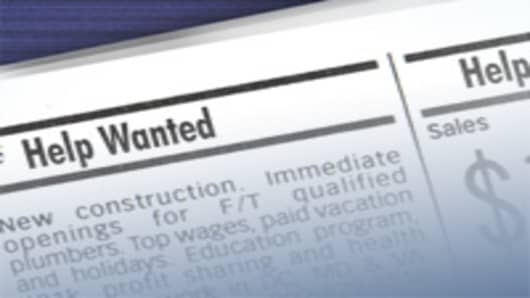US employers cut payrolls by a bigger-than-expected 80,000 in March, adding more evidence that a housing downturn and credit crisis have pushed the economy into a recession.
It was the third monthly decline in a row and the biggest in five years, according to the Labor Department.
Adding to the bleak picture, the department revised the first two months of the year's job losses to a total of 152,000 from a previous estimate of 85,000.
The March unemployment rate jumped to 5.1 percent from 4.8 percent, the highest since a matching rate in September 2005.
The March job report was more bleak than expected.
Economists polled ahead of the report forecast a decline of 60,000 in non-farm payrolls and a rise in the unemployment rate to 5 percent.
"It's not a good number, clearly," said David Bianco, chief US equity strategist at UBS.
"But the market has been braced for a bad number. Almost every investor equity and otherwise would acknowledge that we are in a recession but we still think it is a mild recession and we are going to have pretty good profit conditions in the S&P 500 for this quarter and for the rest of the year," he said.
U.S. government debt prices jumped on the weak data as financial markets anticipated more interest rate cuts from the Federal Reserve.
"There doesn't appear to be any silver lining. It shows that we're right in the middle of a recession that will probably take a while," said Carl Lantz, U.S. interest rate strategist at Credit Suisse in New York. "Our expectation is that it will be a longer recession than the last two and we're just in the beginning," Lantz added.
U.S. short-term interest rate futures rose as dealers raised bets that the Federal Reserve will make an aggressive interest rate cut this month and beyond.
The implied prospects for the Fed to cut its benchmark lending rate by 50 basis points at the April 29-30 policy meeting hit 40 percent against 20 percent late on Thursday.
A smaller, 25 basis point rate cut from the Federal Open Market Committee, which would take the fed funds rate to 2 percent, is fully priced.
"The market is way too premature in thinking that Fed easing will stop with a funds rate above 1.75 percent," said Alan Ruskin, chief international strategist at RBS Greenwich Capital in Greenwich, Connecticut.
"If we were not in a recession before, it looks like we are likely in one now," said Rudy Narvas, analyst at 4CAST Ltd in New York.
Dealers have cut back on prospects for aggressive easing in recent days, guessing that there is opposition within the Fed to pushing rates much below current levels because of worries about stoking inflation.
However, the rising jobless rate suggests less pressure on resources.
"This will allow the Fed to do further easing in monetary policy without a rise in core inflation," said Robbert Van Batenburg, head of global research at Louis Capital Markets in New York.
During the first quarter of this year job losses averaged 77,000 a month, compared to average monthly gains of 76,000 in the last half of 2007, according to Keith Hall, Bureau of Labor Statistics commissioner.
Job losses were widespread in March, with the biggest losses in construction and manufacturing.
Factory employment fell by 48,000, the biggest decline since July 2003.


